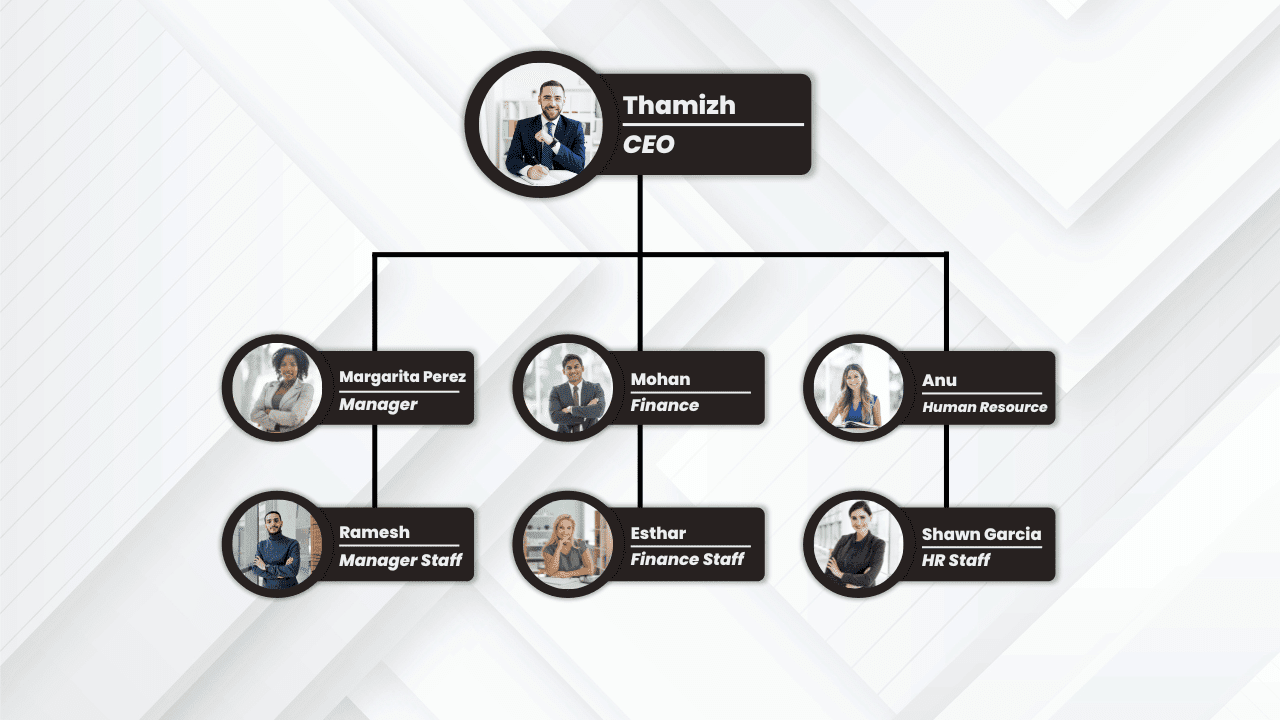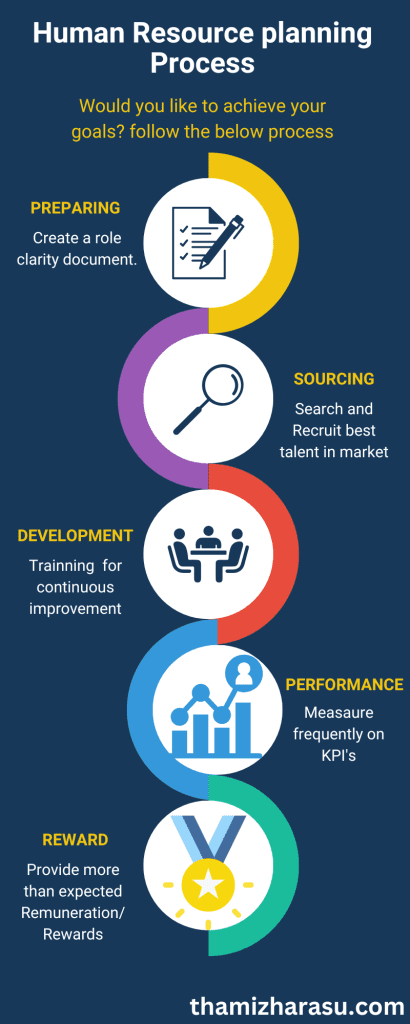- 21/12/2022
- Posted by: Thamizharasu Gopalsamy
- Category: Human Resource

Strategic Human resources management is a complex but essential part of any business. In this article, we’ll break down the components of a successful HRM framework and how it can help you manage your team more effectively. We’ll discuss the objectives, mission, culture, responsibilities, and results that make up a strong HRM system as well as the importance of teamwork and processes in making sure everything runs smoothly.
1. What is Strategic Human Resource Management
Strategic human resource management (SHRM) is a comprehensive approach to managing people that aligns their individual capabilities and aspirations with the business goals of their organization.
The purpose of SHRM is to ensure that an organization’s human capital contributes to its overall success and competitiveness. To achieve this, SHRM must be aligned with the strategic goals and objectives of the organization.
SHRM includes all aspects of an organization’s HR policies, programs, and practices. It encompasses everything from talent acquisition and development, to compensation and benefits, to employee relations and engagement.
An effective SHRM framework enables organizations to attract, develop, motivate, and retain the best talent. It also helps them to create a work environment that fosters innovation, creativity, and high performance.
2. The Objective of Strategic Human Resources Management
The objective of human resources management is to ensure that the organization has the right people in the right places at the right time, and that they are able to perform to their fullest potential. This requires that HRM functions be integrated with the overall strategy and goals of the organization.
HRM must also support the organization’s business model and values. For example, if an organization values customer service above all else, HR policies and practices should be aligned to attract and retain employees who are passionate about providing excellent service.
Ultimately, the goal of HRM is to contribute to organizational success by attracting, developing, and retaining a high-performing workforce.
3. The Mission of Strategic Human Resources Management
The mission of human resources management is to ensure that the organization’s human capital is managed in a way that maximizes the organization’s ability to achieve its strategic objectives. In order to do this, human resources management must align the organization’s human capital strategy with its business strategy.
Culture and Ethics in Strategic HRM
Human resource management is a process of managing people in organizations. It is a strategic and comprehensive approach to managing employee relationships in order to achieve organizational goals. Culture and ethics are two important aspects of HRM.
Culture refers to the values, beliefs, and norms of an organization. It affects the way employees behave and interact with each other. Ethics refers to the moral principles that guide an individual’s or organization’s behavior. Organizations must create a culture and ethical framework that promotes integrity, accountability, and respect for others.
The culture and ethical framework of an organization should be aligned with its mission, vision, and values. The HRM function must play a key role in shaping the culture and ethical climate of the organization. HR policies and practices should reflect the organization’s commitment to ethical values.
Organizations must create an environment that supports ethical decision-making. Employees should be aware of the organization’s code of conduct and expected to comply with it. They should also be given opportunities to voice their concerns about ethical issues.
Organizations should encourage employees to report unethical behavior. They should have procedures in place for investigating and responding to complaints of unethical behavior
4. Responsibilities – HRM Framework
In order to ensure that an organization’s human resources are managed effectively, a framework must be put in place. This framework should outline the roles and responsibilities of those involved in HRM, as well as the processes and procedures that need to be followed.
The first step in creating an effective HRM framework is to identify the different roles that need to be filled. These roles can be divided into two main categories: operational and strategic. Operational roles are those that are directly involved in the day-to-day management of HR, such as handling employee records or processing payroll. Strategic roles, on the other hand, involve developing and implementing long-term plans for the organization’s human resources.
Once the different roles have been identified, it is important to clearly define the responsibilities of each one. These responsibilities should be outlined in a job description for each role. In addition to defining the specific tasks that need to be carried out, these job descriptions should also include any expectations or objectives that need to be met.
Once the roles and responsibilities have been established, it is then necessary to put in place processes and procedures for managing human resources effectively. These processes will vary depending on the specific needs of the organization, but they might include things like performance management or training and development. It is important that these processes are documented so that everyone involved knows what is expected of them.
By putting in place an effective HRM framework, organizations can ensure that their human resources are managed
5. Systems and Processes in Strategic Human Resource Management
Human resources management is the process of planned and coordinated activities that aim to ensure the effective use of an organization’s human resources. The system or process approach to HRM includes all activities related to the acquisition, development, utilization, and maintenance of the organization’s human resources.
The system or process approach to HRM has four main components:
1. Human resource planning: This component ensures that the right number and type of employees are available when they are needed. Human resource planning involves forecasting future demand for employees and developing plans to meet that demand.
2. Recruitment and selection: This component ensures that employees with the necessary skills and abilities are hired to fill vacant positions. Recruitment and selection involve identifying the specific skills and abilities required for a particular job, advertising vacancies, screening applicants, conducting interviews, and making offers of employment.
3. Training and development: This component ensures that employees have the necessary skills and knowledge to perform their jobs effectively. Training and development programs provide employees with the opportunity to learn new skills and improve their performance.
4. Performance appraisal: This component provides information on employee performance in order to identify areas where improvement is needed. Performance appraisal involves setting performance standards, measuring actual performance against those standards, providing feedback to employees, and taking corrective action where necessary.

6. Results – Achieving objectives through HRM processes and systems
The HRM framework provides a structure for thinking about how HRM processes and systems can help organizations achieve their objectives. The framework is not a prescriptive model, but rather a tool that can be used to assess the HRM system in place and identify areas where improvements could be made.
The key components of the HRM framework are:
1. Recruitment and selection: Attracting and selecting employees who have the skills and abilities to help the organization achieve its objectives.
2. Training and development: Providing employees with the knowledge and skills they need to perform their jobs effectively.
3. Performance management: Setting clear expectations for employee performance and holding employees accountable for meeting those expectations.
4. Compensation and benefits: designing compensation and benefits programs that attract, retain, and motivate employees.
5. Employee relations: Creating a positive work environment that promotes employee engagement and commitment.
7. How can organizations implement an effective framework for HR management?
Human resource management is a process of managing people in organizations in a structured and comprehensive manner. HR management includes the activities of recruiting, selecting, training, appraising, and rewarding employees. The ultimate goal of HR management is to ensure that the organization has a skilled and motivated workforce that is able to contribute to the success of the organization.
There are many different approaches to HR management, but all effective frameworks have certain key elements in common. These elements include:
1. A clear understanding of the organizational strategy: In order to align the workforce with the overall business strategy, organizations need to have a clear understanding of what they are trying to achieve. This means having a well-defined mission and vision, as well as specific goals and objectives.
2. A focus on talent: Organizations need to identify the skills and competencies that are most critical to achieving their strategic objectives. They then need to put in place systems and processes for attracting, developing, and retaining talent.
3. A commitment to continuous learning: In today’s rapidly changing business environment, it is essential for organizations to commit to continuous learning. This means providing employees with opportunities to learn new skills and knowledge so they can keep up with changes in their field. It also means creating a culture where lifelong learning is valued and rewarded.
4. An integrated approach: HR management should be integrated into all aspects of the organization’s operations. This includes everything from how job roles are designed
8. key takeaways in strategic human resource management
There are three key takeaways in strategic human resource management:
1. Strategic HRM is the process of aligning HR policies and practices with the organization’s strategic goals.
2. The main objectives of SHRM are to improve organizational performance and to create a competitive advantage for the organization.
3. SHRM must be integrated into the overall business strategy of the organization in order to be effective.
Leave a Reply
You must be logged in to post a comment.
